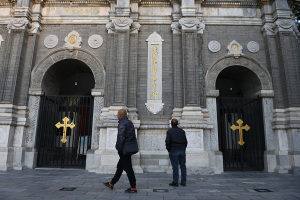Under 6 Percent Unemployment Rate May Really Be Double? Economic Experts Explain Why

While people celebrate the fact that America's unemployment rate has fallen below six percent for the first time since 2008, some economic experts say not so fast and point out the discrepancy between the unemployment rate and the number of unemployed persons.
The Bureau of Labor Statistics data released its unemployment summary for the month of September on Friday and found that the country's overall unemployment rate decreased by 0.2 percentage points to 5.9 percent, the lowest the rate has been since July of 2008. Additionally, employers added approximately 248,000 jobs in the month.
American Enterprise Institute resident scholar in economic studies Aparna Mathur told The Christian Post that in order to better judge the progress of the American economy, analysts need to look at the U-6 unemployment rate. Mathur said the U-6 rate provides better measures that takes into account people that have dropped out of the labor force due to discouragement. The U-6 rate finds that the unemployment for the month of September is really double the BLS figure at around 11.8 percent.
"Just focusing on the unemployment rate gives you very small sliver of the entire picture," Mathur said. "The unemployment rate itself doesn't completely reflect the state of the economy because a lot of these people out there who are hoping to find jobs but have basically given up in the short term because they are discouraged."
Both Mathur and Brookings Institute senior fellow in economic studies Gary Burtless agree that it is important to note that the the total labor force decreased at a faster rate than the number of persons holding a job increased. While the total unemployment rate fell by 0.2 percent, the number of unemployed persons fell by nearly 1.9 percent in September.
"The fact that the reported number of unemployed fell faster than the number of adults holding a job increased means the number of Americans in the labor force fell last month," Burtless said in a statement issued to CP. "Indeed, the labor force participation rate touched a new low in September, notwithstanding the strong and fairly steady job gains of the past year."
Burtless said that due to the stark decline in the labor force, economists need to reevaluate the size of America's total labor force.
"The weak performance of labor force participation in the face of steady employer demand means that many economists will have to reassess their views of the potential size of the U.S. labor force," Burtless said. "Many adults whom we would expect to be in the labor force, especially in the prime working ages between 25 and 54, remain on the sidelines, neither working nor looking for work."
Mathur and Burtless think that the declined number in the labor force is due to employers still not offering the wages and benefit packages that unemployed persons are seeking. Burtless said that judging by the fact that weekly earnings only rose .4 percent, it means that the leverage is still in the hands of the employers.
"The fact that wages remain stuck despite of 48 successive months of job gains suggests that employers' bargaining power remains exceptionally strong," Burtless said.
Although the Obama administration has somewhat benefited from a slow improvement to the unemployment rate, Mathur said that it is not because of any policies that the administration has implemented. She said that if policies had been implemented to address the labor market, the nation's economic growth would occur much faster.
"We are slowing recovery than we would see if we had a policy that specifically targets the labor market," Mathur said. "I haven't seen a policy that would actually do that. We have, on the other hand, seen fewer regulations that have affected hiring."
Mathur also urged that it is important to track the progress of the long-term unemployment rate which measures those unemployed for 27 weeks or more. The long-term unemployment rate remained steady at about three million people for the month of september.




























